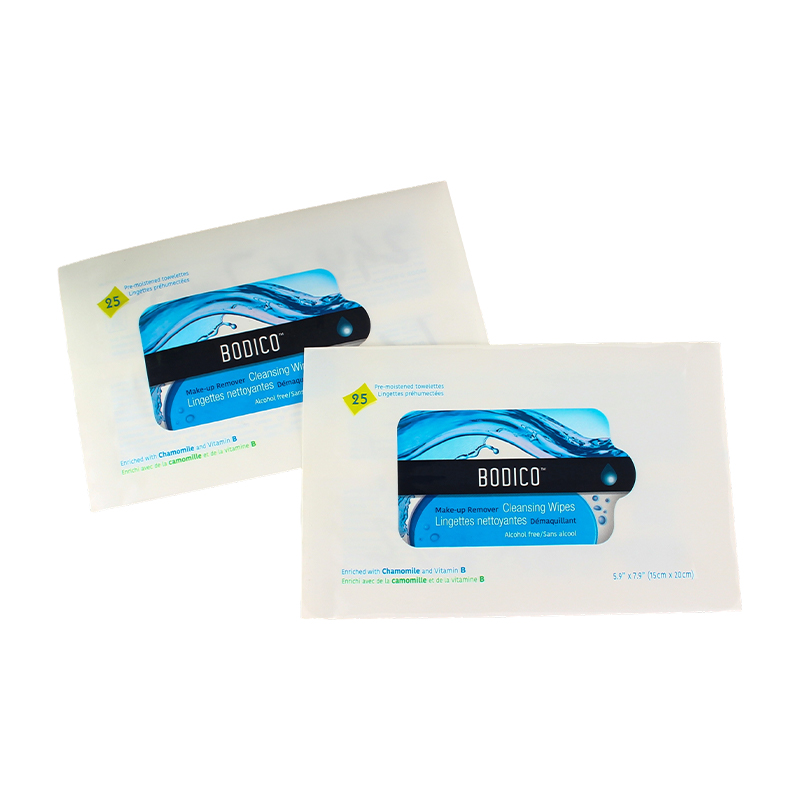2025-07-24
As the demand for wet wipes continues to surge worldwide, packaging innovation plays a pivotal role in delivering freshness, user convenience, and environmental responsibility. Among the various packaging formats gaining momentum, thin label wet wipes packaging bags have emerged as a popular choice for manufacturers seeking a balance between lightweight design, effective sealing, and brand visibility. These packaging bags, characterized by their slim profile combined with a strategically placed label, offer a modern, cost-efficient solution tailored to today’s fast-paced consumer market.
What Are Thin Label Wet Wipes Packaging Bags?
Thin label wet wipes packaging bags are flexible pouches designed with a minimalist packaging film paired with a thin, often pressure-sensitive label that carries the product branding, instructions, and regulatory information. Unlike fully printed or thick laminated pouches, this format utilizes a thinner film substrate, reducing material use, while a carefully designed label delivers the necessary visual appeal and product details.
This approach allows for lightweight packaging that preserves wet wipe moisture effectively, offers resealability in many cases, and maintains a sleek, modern appearance that appeals to eco-conscious and convenience-oriented consumers alike.
Key Advantages Driving Adoption
Material Efficiency and Reduced Weight: The thin film base combined with a small, high-quality label significantly reduces the overall material content, lowering packaging weight and production costs. This reduction also positively impacts transportation efficiency and carbon footprint.
Effective Moisture Retention: Despite their slim profile, these bags are engineered with multi-layer films that offer moisture barrier properties, ensuring wet wipes remain moist and usable throughout their shelf life.
Customizable Labeling: The thin label allows for precise placement and high-quality printing, offering brands flexibility to create eye-catching designs, communicate essential product information, and maintain compliance with regulatory standards.
Resealability and User Convenience: Many thin label wet wipes bags feature resealable adhesive labels or zipper closures that help consumers access wipes easily while moisture loss between uses.
Sleek and Modern Aesthetic: The minimalist packaging design appeals to consumers seeking clean, simple, and eco-friendly product presentation, supporting brand differentiation in competitive retail environments.

Materials and Construction
Thin label wet wipes packaging bags typically consist of a thin, flexible laminated film combining materials such as polyethylene (PE), polypropylene (PP), and polyester (PET). These films are designed to offer sufficient strength and moisture barrier while plastic content.
The label material is often a pressure-sensitive film or paper that adheres securely to the bag surface. Labels are printed using advanced techniques like flexography or digital printing, providing sharp images, vibrant colors, and durable finishes that withstand handling and exposure to moisture.
Applications Across the Wet Wipes Market
Thin label wet wipes packaging bags are widely used across various segments:
Baby Care: Packaging that emphasizes softness, safety, and ease of use while maintaining product freshness appeals to parents and caregivers.
Personal Hygiene: Facial, antibacterial, and intimate wipes packaged in thin label bags cater to consumers prioritizing portability and resealability.
Household Cleaning: Cleaning wipes benefit from durable packaging that can be resealed and stored conveniently.
Industrial and Healthcare: Medical and disinfectant wipes use thin label packaging where lightweight, cost-effective, and sterile options are essential.
Industry Trends Influencing Growth
Sustainability concerns and cost pressures are driving demand for thinner, more resource-efficient packaging solutions. Thin label wet wipes bags respond to this by reducing plastic use without compromising performance.
Additionally, the rise of e-commerce and on-the-go lifestyles pushes brands to adopt packaging that is easy to handle, transport, and reseal after opening. The clean, minimalist look of thin label bags also aligns well with modern branding trends focusing on transparency and eco-consciousness.